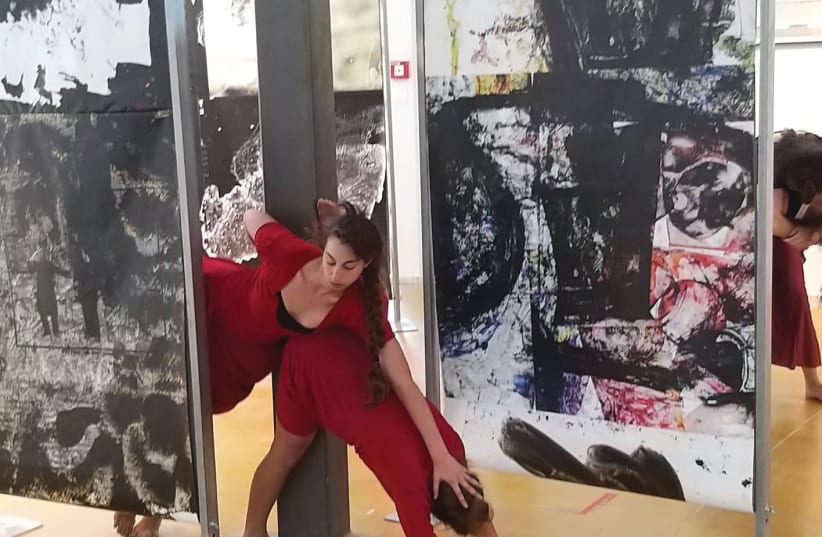The exhibition includes artists from the art department at the University of Haifa; The NB Haifa School of Design; Shenkar College of Engineering and Design in Ramat Gan; Bezalel Academy of Arts and Design in Jerusalem; young artists from Seminar Hakibbutzim in Tel Aviv; and independent artists from around the country, as well as guest curators and editors of art magazines such as Portfolio and Art Today as well as art tour guides.
Curator Shirley Meshulam explains that the basic themes of the exhibition include the idea of “art lessons” and the broken and hopefully revitalized dream of the State of Israel.
The latter is partially achieved by reawakening interest in the work of Avraham Ofek, in the process resuscitating and rejuvenating old dreams concerning Israel as a state.
The “art lessons” – that is to say, the delight of art through various media – are ways one can transport oneself to different ways of seeing and thinking, and thus the curator/s have cleverly designed the format of the gallery space as resembling a central bus station.
It was extremely exciting to engage with viewing live art again. Yes, technologies are useful, but let us not lose sight of the tactile, visceral and experiential upliftment that occurs in real time and real space.
Yes, one might argue that all environments are artificial and not natural, as it were, but it is surely important to venture beyond the facile world of the computer screen and mobile devices, albeit we live in strange times, and venture out! It is healthy not just for the mind, but for the body, too, to walk around the exhibition space; gaze from different angles, happily skip up and down stairs to be met with art of a very contemporary and cutting-edge nature.
The first room housed the abstract meanderings of Khen Shish, where the abstract and symbolic coalesce in a series of powerful images.
In the same space is Avivit Ballas Baranes, whose drawing seemed to me the interface between the conscious, verbal dimension and the subconscious, nonverbal and emotive dimension.
In the case of both these artists and in accord with the exhibition theme, namely “art lessons,” one may surmise that these artists are playing with basic forms in a didactic manner, and show how art, how visual language, maps onto the mind as expediently as a simple language of convention, the use of words, in order to articulate a meaning of some sort.
Gilad Ophir’s photographs on various materials and set up as sculptures or installations of sorts are extraordinarily strong. The one series is large print of sorts of a sacred Hebrew book, or so it seems, folded in a weird way and forming an odd shape.
While the verbal takes form in the shape of a book wherein that form itself no longer carries meaning other than to be identified as “book,” here the artist inverts that, and text is secondary to visual form, and form itself has meaning, in this case over and above the textual relevance or perhaps even feeding into its narrative.
Shadi Toafra’s black paintings are highly textured. In that darkness one sees reflections of light, and in the high volume of texture there are nuances of black. In that sense, no absolute zero point is found, and an image is negated in the favor of pure color and texture – texture to the point that the painting is in fact a sculptural mass, a hybrid of two and three dimensions.
The exhibition filled me with an overwhelming sense that art is yet alive; and that notwithstanding the restrictions we live under, it is time that cultural expression be a foremost concern and a part of the education system itself in a more robust way.
In fact, upon exiting the exhibition and descending the stairs, I saw graffiti art on the walls there and just felt relieved that whether it’s within the grand gallery space or beyond its walls, art is everywhere, if only we should be open, our eyes and heart attuned.
